Mordovian national costume
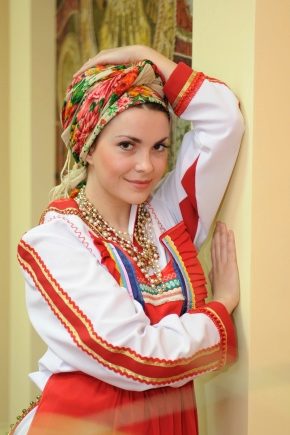
Mordovian national costume originates in ancient times. For many years, the people invested in its creation a piece of their culture and life. They painstakingly created what was convenient and at the same time could emphasize the peculiarities of the culture of Mordovia.

The Mordovian costume opens up a new view of beauty from the point of view of the Mordovian people. A real Mordovian costume is a whole work of art, made up of different elements of clothing, uniquely decorated and decorated. And all this skillful ability to create unique things was carefully preserved for many hundreds of generations and passed from hand to hand.

A bit of history
Mordva is an ancient Finno-Ugric tribe. It began to form in the 7th-6th centuries BC on the territory of the Saratov Volga region, on the right bank of the Volga and its tributaries, in the basin of the Don rivers. Gradually, the people of Mordovia became settled agricultural, fortresses and cities appeared. Mordovians at all times were very disparate - they fell under the yoke of the Mongol-Tatar yoke, under the rule of the Kazan Khanate ... All this affected the formation and transformation of the Mordovian national costume.
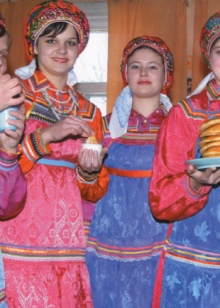
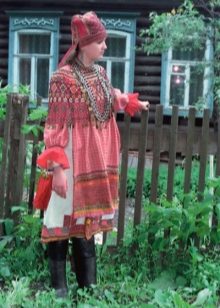

It can be said that the costume was formed by the peasants, therefore it included only the details of clothing necessary for daily use.Of the main things, underwear and outerwear can be noted. As well as sets that were different for the off-season and winter. Separate parts served for decoration and were removable.
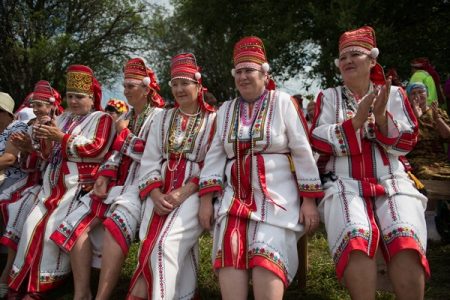
The Mordovian people are divided into two ethnic groups. These are Mordovians-Mokshas and Mordovians-Erzi. The national costumes of each group are different. Of the general features, the following elements of clothing can be noted:
- canvas is used as the main fabric;
- shirts in the form of a tunic;
- embroidered trim;
- decorations are beads, coins, shells.
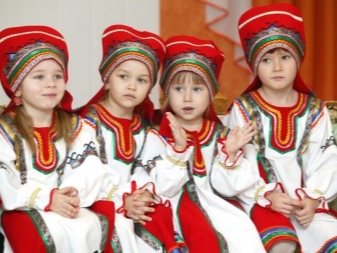
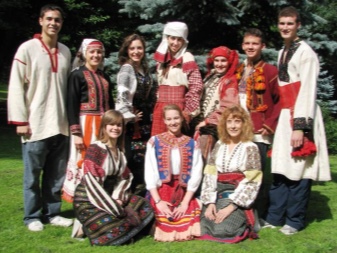
Peculiarities
The Mordovian costume is distinguished by the richness of its colors. Especially designed for women. It is rightfully considered the crowning achievement of decorative and applied art of Mordovian craftswomen. Each ethnic group has at least a dozen different types of costumes.
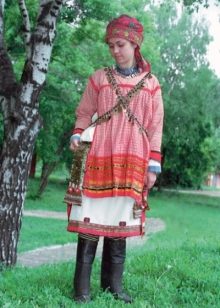
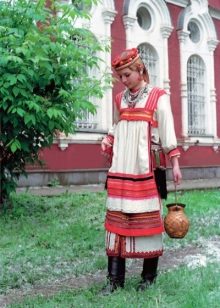
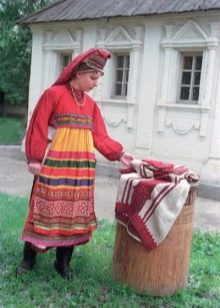
The Mordovian shirt is similar to the clothes of the Byzantine kings. And thanks to the rich embroidery of wool, it acquires heaviness and majesty.
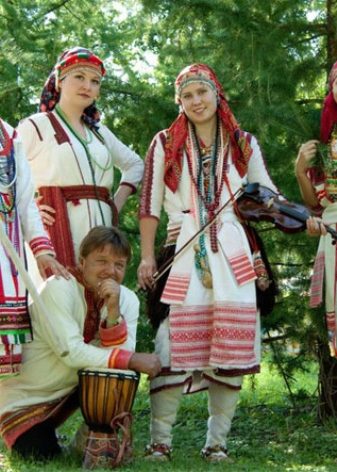
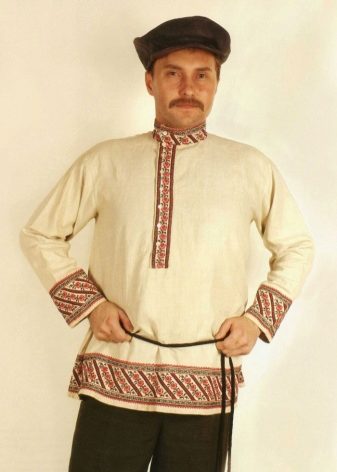
The Mordovian costume from both ethnic groups was finally formed in the middle of the 19th century. One can note the simplicity of everyday clothes and the complexity and multi-component of solemn dresses, replete with decorations and special drapery of the figure.
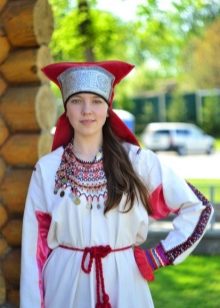


Colors and shades
The clothes of the people of Mordovia were not particularly abundant in different colors.
- Men's suits consisted mainly of dark cloth. Black and white colors were present in shoes and headdresses.
- Women's clothing won due to multi-colored embroideries and decorations.
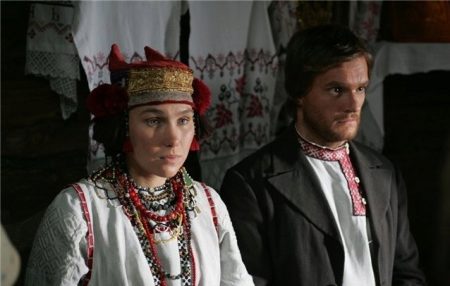
Fabrics and fit
- For everyday wear, the Mordovian people used coarse fabric, which was made from hemp. Clothes for solemn occasions were more sophisticated. She was sewn from linen.
- Cloth was used to make headdresses.
- The cut of the clothes was free, straight or trapezoidal.Outerwear was smelly.
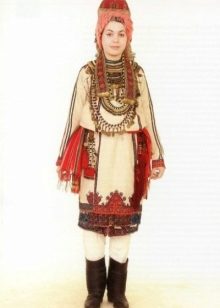

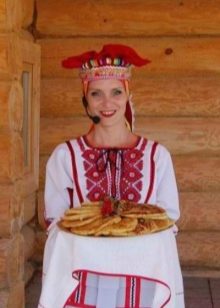
Varieties
Female
The women's attire was rich in various elements of clothing, which is why Mordovian women sometimes had to spend several hours on their decoration and resort to the help of several assistants.
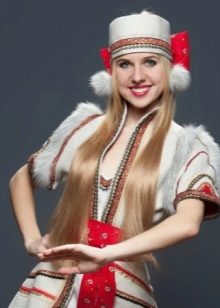
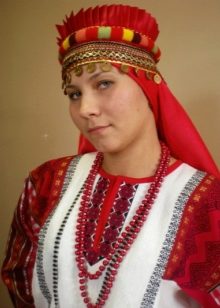
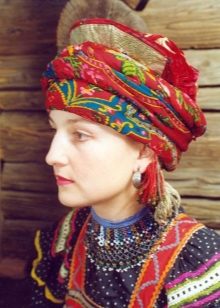
A shirt in the form of a tunic was common among both ethnic groups. But unlike the men's, the women's was richly decorated. And women were common belts, frames. Their distinguishing feature was the tassels at the ends. Mokshans wore a shorter shirt, so pants went with it. Among the Erzya, instead, it was customary to wear a loincloth - pulai. Pulai and his decoration could tell a lot about a woman, her origin and prosperity.
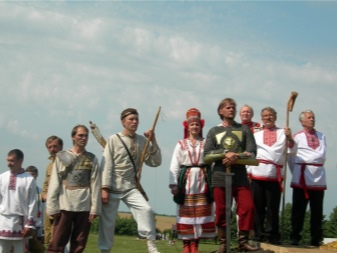
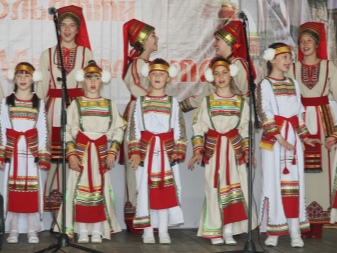
The Mordovians also had a dress. It was called kafton-krda. Over the dress, women wore loose clothes with different names: rutsya, impanar, mushkaz, hoodie. Sleeveless jackets, knee-length, were also common. They were decorated with frills and had a fitted cut. In winter, women wore sheepskin coats, just like men.
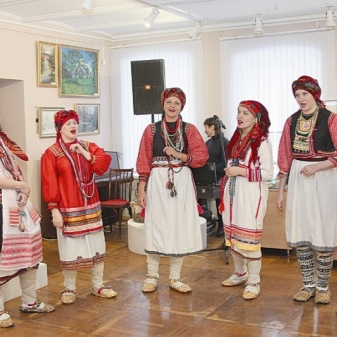
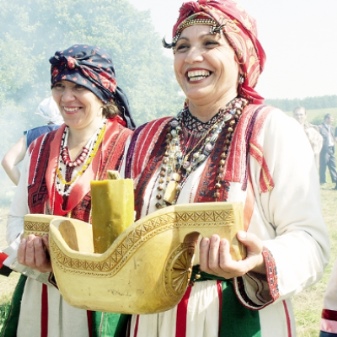
The age, position in the family and society could also be judged by the female headdress. They were wonderfully decorated. The Erzyanki wore a high hat in the shape of a cylinder; among the Moksha women, it looked like a trapezoid-shaped cap.
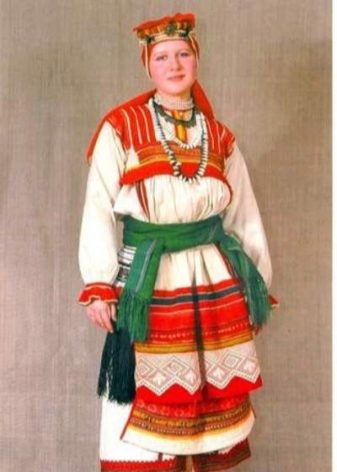

Children's
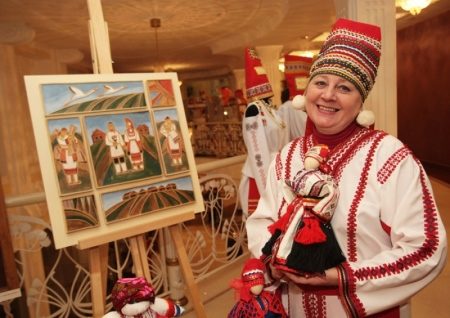
One of the latest fashions for women was the apron. It was worn not only on weekdays, but also on holidays.

Children's clothing repeated elements of men's and women's adult costumes. Boys also wore shirts and caftans or sheepskin coats. The girls could boast of embroidered hoodies and dresses.

Male
The men of the people of Mordovia dressed almost like Russians. True, they had their own characteristics. The main elements of clothing were a shirt - panar, and trousers called ponkst.
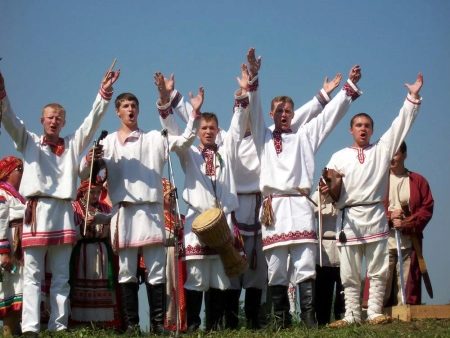
The shirt was worn over trousers.For convenience, it was girdled. The belt played an important role. It was called a sash or frame. Of the materials for its manufacture, leather was used. A plaque made of bronze, iron or silver served as a decoration. It could be the usual round shape or with a belt clip.
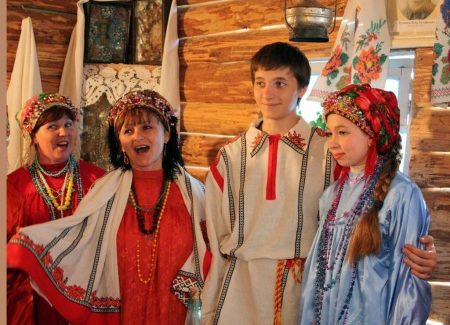
The plaque was covered with original patterns, various images. In addition to its direct purpose, the sash served to attach weapons and other items to it that needed to be kept with you. The belt of warriors was their hallmark. For those who deserved special awards in battles, various iconic buckles, plaques, and tips were attached to their belts.

In the summer, the men's costume of the people of Mordovia underwent changes. Another white shirt was worn over the main shirt. Moksha called her Mushkas, Erzi - Rutsya. In autumn, men took out one more element of clothing - a coat or suman. It was fitted cut, black or brown. The back was decorated with frills.
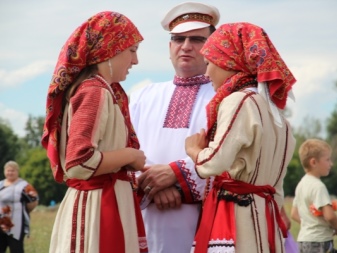

Another type of clothing worn in the demi-season is the chapan, a straight-cut product with a large smell, a wide collar and long sleeves. It was thrown over a shirt and tied with a belt.
In winter, Mordovian men wore sheepskin coats. The waist of these fur coats was detachable, with gathers. Chapan, sheepskin coats were travel clothes.
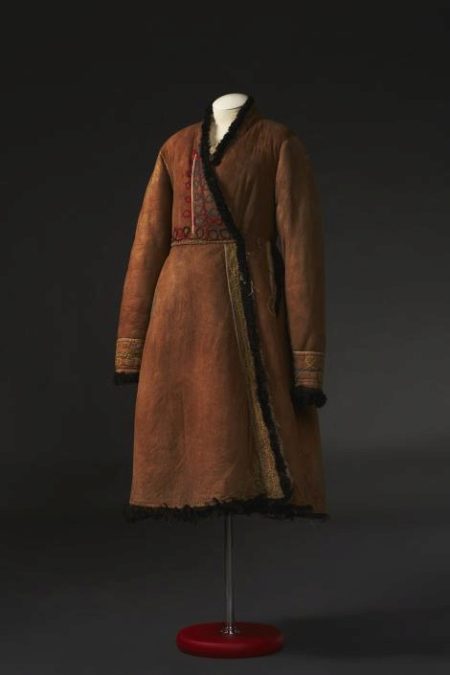
As a headdress, the inhabitants of Mordovia made hats with small brim and caps. They did not differ much in colors, they were either white or black. In the 19th century, there was a fashion for winter hats with earflaps and summer canvas caps.
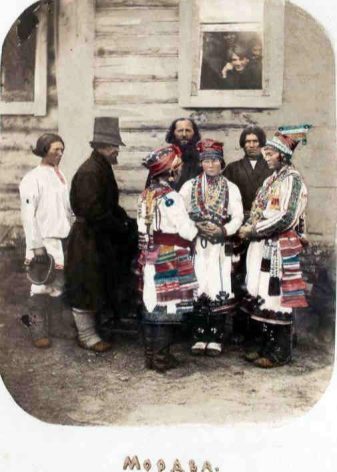
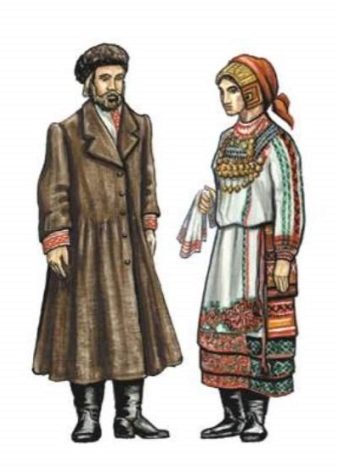
Accessories and decorations
The main decorations in clothing for the Mordovians were original embroideries. The girls of each village even competed among themselves in this art. Jewelry was also common.Archaeologists find rings, bracelets, rings, earrings with pendants.
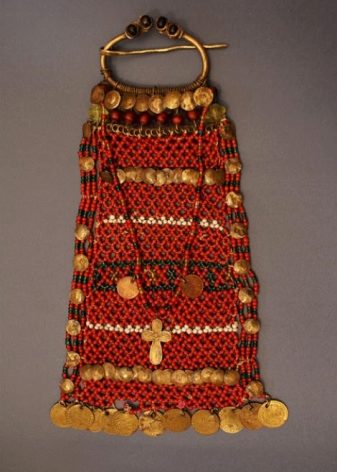
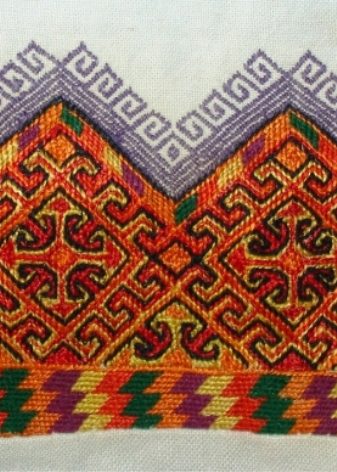
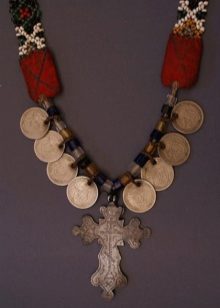
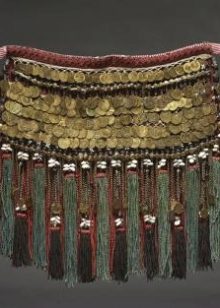
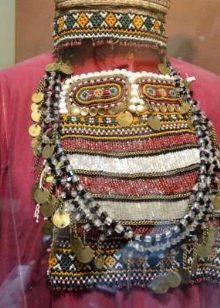
Shoes
Shoes were divided into casual and festive. Bast shoes were worn in summer and winter. In the manufacture of bast shoes, oblique weaving was used. They were carried out with low sides, in front they were in the form of a trapezoid.


For the warm period, linings were used in bast shoes, for the cold period - onuchi. On holidays, the Erzyans put on a kemt, the Mokshans wore a kemot. The most elegant were boots, decorated with folds on the shins and heels. The boots had pointed toes. They wore cowhide and calfskin.
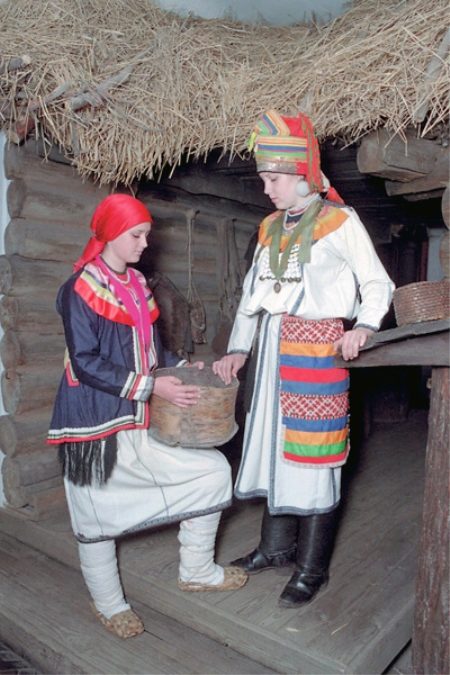
Women's shoes were not much different from men's. The difference was only in the color of footcloths. Rich women of the Mordovian people put on boots on holidays.
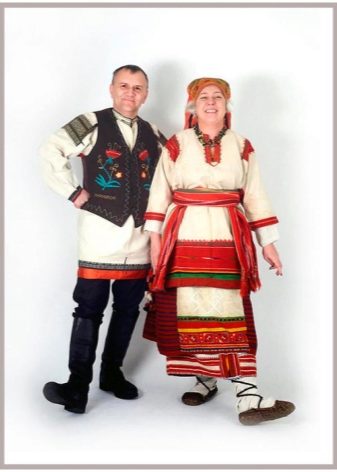























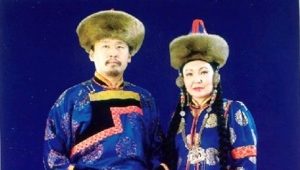
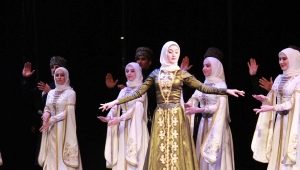




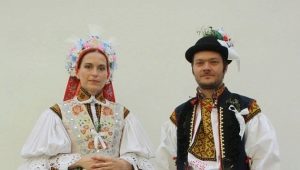
Very informative information. I would like to learn more about my ancestors and our culture.